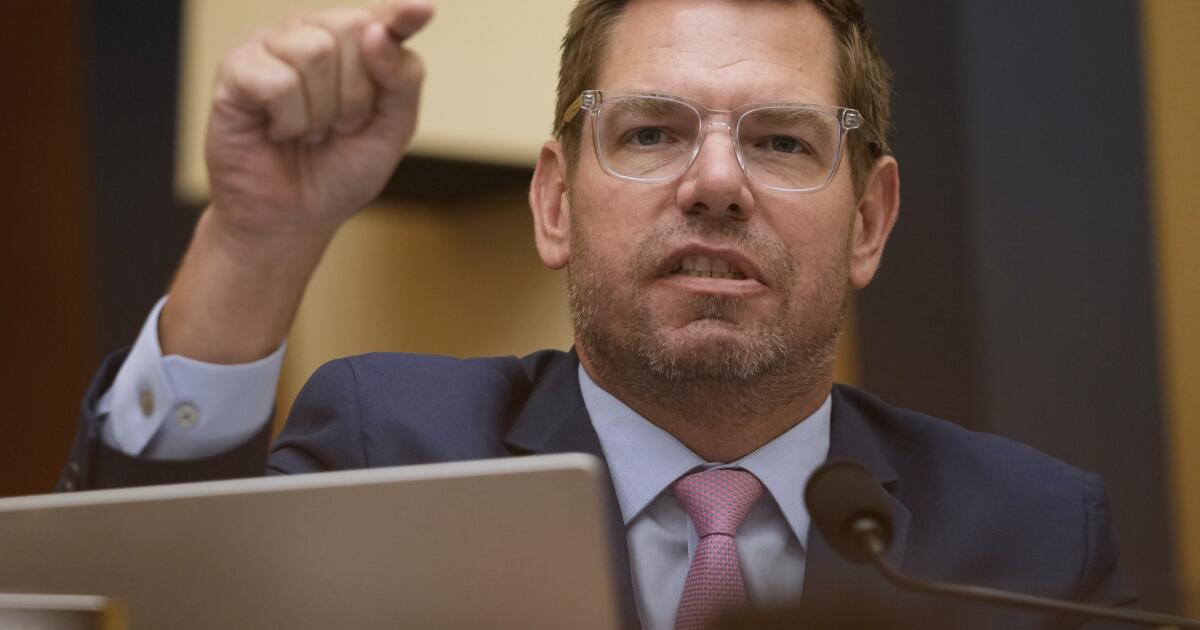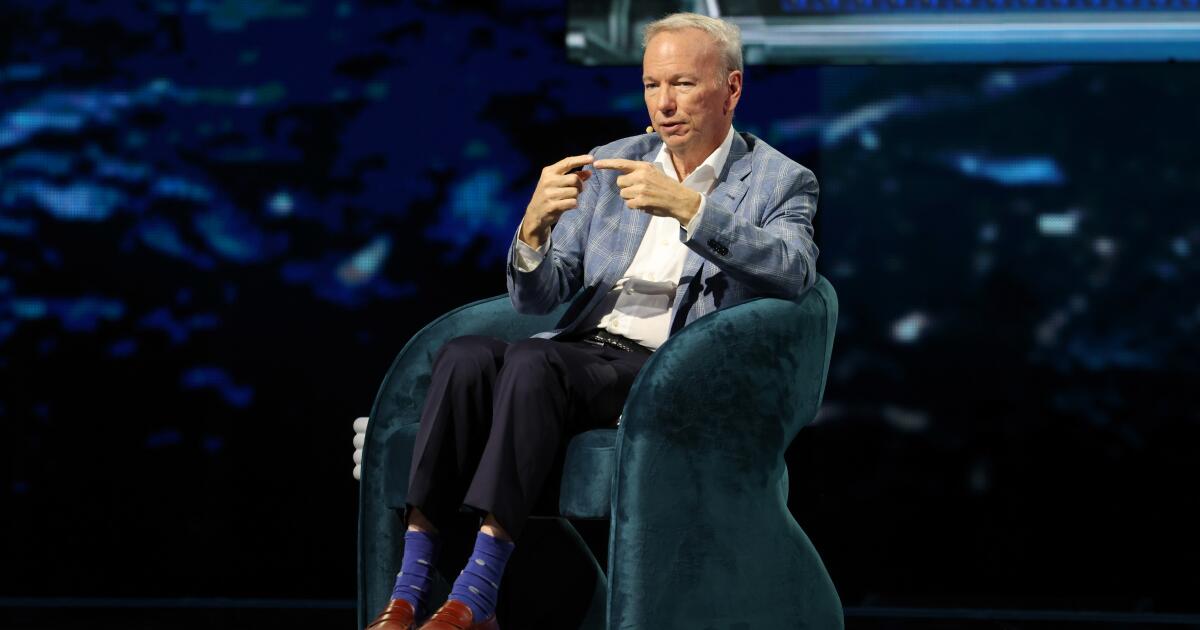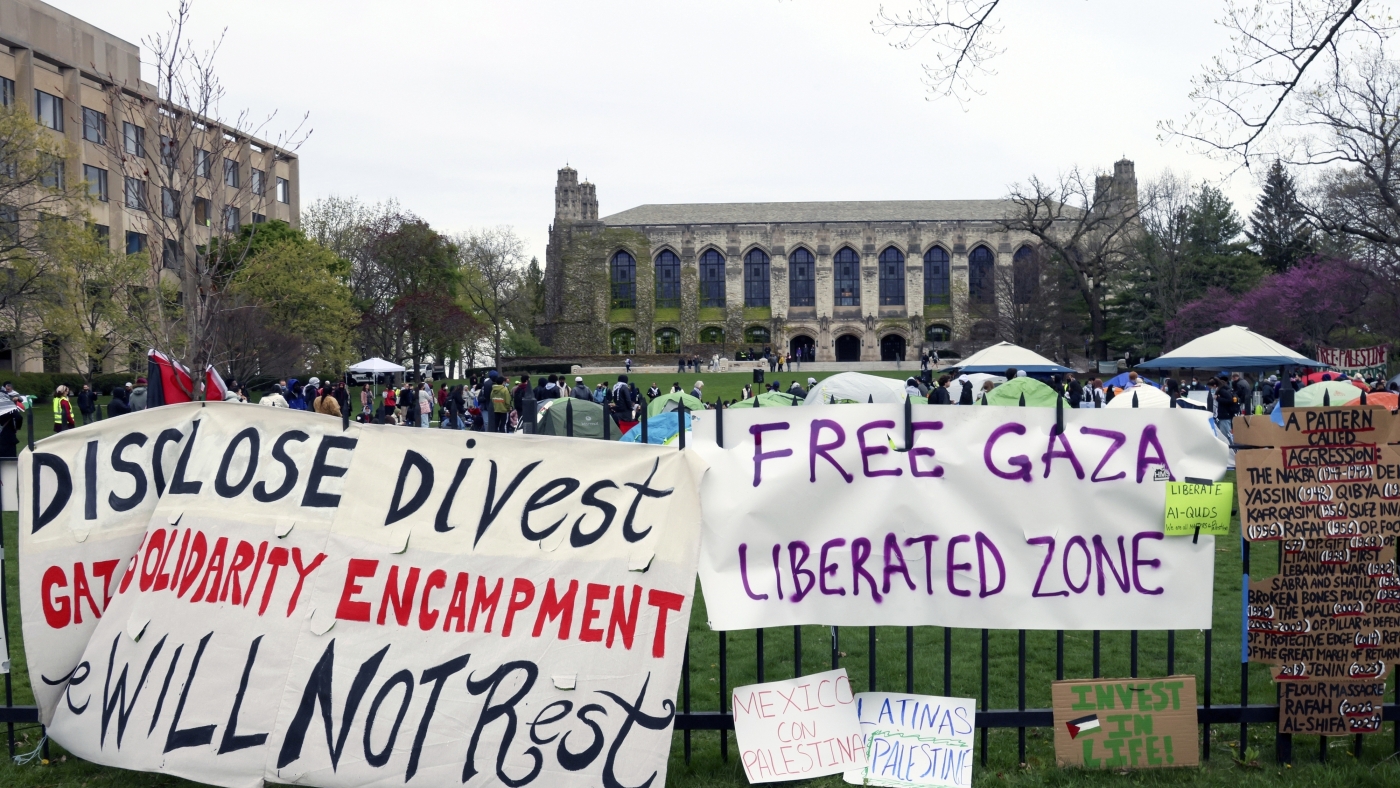Wisconsin
Joann plans to close 16 Wisconsin stores, a change from what the retailer said in January

Almost 70% of the Joann fabrics and craft stores in Wisconsin are now set to close, a stark change to a month ago, when the company, which recently filed for bankruptcy, made no mention of store closings in the state.
After filing for bankruptcy in January, the national retail chain has asked the U.S. Bankruptcy Court for the District of Delaware to authorize the closure of about 500 stores across the U.S., including 16 in Wisconsin, according to a statement from Joann on Wednesday.
The company first filed for bankruptcy in March 2024 but was able to keep its stores open by going private, despite owing $1 billion in debt at the time. However, the 82-year-old company still owes more than $600 million in debt and has faced lagging sales and inventory issues, according to CNN.
The January announcement from the company had initially excluded any mention of closing Joann stores in Wisconsin, but Wednesday’s announcement changes that.
Which Joann stores in Wisconsin are closing?
A total of 16 Joann stores are closing in Wisconsin, including four in the Milwaukee area, according to the announcement.
- Fond du Lac: 806 W. Johnson St.
- Janesville: 2700 N. Pontiac Drive
- Madison: 2021 Zeier Road
- Pewaukee: 2020 Silvernail Road
- Cudahy: 5656 S. Packard Ave.
- Brookfield: 16800 W. Bluemound Road
- Menomonee Falls: N78 W14531 Appleton Ave.
- Watertown: 401 Bernard St.
- Plover: 1150 Meridian Drive
- Lake Geneva: 600 N. Edwards Blvd.
- Beaver Dam: 1645 N. Spring St.
- Marshfield: 1919 N. Central Ave.
- Marinette: 2400 Roosevelt Road
- Oshkosh: 1226 S. Koeller St.
- Racine: 2629 S. Green Bay Road
- Sheboygan Falls: 4079 Highway 28
Which Joann stores in Wisconsin will remain open?
The company has a total of 23 locations in Wisconsin. The following will remain open:
- Greenfield: 4950 S. 74th St.
- Appleton: 720 N. Casaloma Drive
- Green Bay: 2777 S. Oneida St.
- Onalaska: 1220 Crossing Meadows Drive
- Wausau: 226830 Rib Mountain Drive
- Eau Claire: 4045 Commonwealth Ave.
- Wisconsin Dells: 121 Commerce St.
A full list of Wisconsin locations can be found on the company’s website.
How many Joann stores are closing? How many are staying open?
The closure of 500 stores will represent an almost 60% reduction in the craft retailer’s brick and mortar spaces, of which there are currently 850, according to its website.
In its Feb. 12 statement, the chain wrote that the closures would contribute to “right-sizing our store footprint” and ensuring the best path forward for the company.
“This was a very difficult decision to make, given the major impact we know it will have on our Team Members, our customers and all of the communities we serve,” Joann said in the statement. “A careful analysis of store performance and future strategic fit for the Company determined which stores should remain operating as usual at this time.”
When will my Joann store close?
Information on when the Joann stores will close was not included in the announcement.
Maia Pandey contributed to this report.
Contact Claudia Levens at clevens@gannett.com. Follow her on X at @levensc13.

Wisconsin
Wisconsin football insider: Why a third-quarter interception proved costly in Badgers’ pursuit of Axe

MINNEAPOLIS – A look back at Wisconsin’s 17-7 loss to Minnesota on Saturday, Nov. 29, in the Battle for Paul Bunyan’s Axe.
Big picture
This one hurt for Wisconsin on a few fronts. First, they missed a chance to build on a run of two wins over ranked opponents in a three-game span by getting a road win over a beatable opponent. Second, they went home without the Axe for the second straight season. Third, they wasted an effort by the defense that resulted in just 218 total yards for the Gophers. The loss leaves Wisconsin with a 4-8 mark for the season and a 2-7 record in the Big Ten that ties it for 14th. Last year they tied for 12th in the 18-team conference.
UW schedule | Standings | Box score
Turning point: Minnesota turns interception into points
The first two times Wisconsin turned over the ball, the defense and/or special teams bailed out the offense. The Badgers weren’t so fortunate the third time. Safety John Nestor undercut a route toward the sideline for Trech Kekahuna with about 6½ minutes to go in the third quarter and returned the interception 68 yards to the Badgers 16.
Three plays later redshirt freshman quarterback Drake Lindsey hit tight end Jameson Geers for a 13-yard touchdown with 5 minutes 4 seconds to go in the third quarter. It was the only score of the second half and it gave the Gophers a 17-7 edge against a team that reached that point total just three times this season. In other words, the sequence left the Gophers in really good shape.
Thumbs up: Jackson Acker’s concentration pays off; Ben Barten blocks another field goal
- Tight end/fullback Jackson Acker’s tight-rope act along the sideline in the end zone resulted in a 1-yard touchdown pass from Carter Smith.
- Ben Barten blocked his second field goal of the season, a 38-yard attempt in the first quarter that kept the game scoreless. His block against Washington on Nov. 8 prevented the Huskies from tying the game in the fourth quarter.
- Linebacker Cooper Catalano led the Badgers with 10 tackles, which moved him into second place on the team with 61 stops.
- Right guard Kerry Kodanko, who came on for Colin Cubberly last week, started his final game and played throughout.
Thumbs down: Badgers’ struggle with punt game, creating turnovers
- Punter Sean West, who entered play averaging 51.2 yards per punt, averaged 29.2 yards in four punts. His punts of 35 and 11 yards in the second quarter helped flip the field in Minnesota’s favor.
- The Badgers failed to create a turnover, meaning they did not create a turnover on the road this season.
- Mason Posa took the blame for Darius Taylor’s 49-yard touchdown run in the second quarter.
Up next for Wisconsin: Signing day, transfer portal
The Badgers won’t have to wait for long to dive into the offseason. Wednesday marks the beginning of the early signing period for high school recruits. Wisconsin has 13 commits it will try to keep in the fold over the coming days.
Badger players won’t be able to officially enter the portal until Jan. 2-16, but some will likely announce their intention to do so well before them. Expect Wisconsin to be active in the portal again.
Wisconsin
Wisconsin’s Best-Kept Secret From Tourists Is A Lovely Village Outside Milwaukee With Tasty Eateries – Islands

If you hear the words “food” and “Wisconsin” and all your brain comes up with is cheese, well, no one would blame you. But despite the nickname, America’s Dairyland state has much more culinary variety to offer. To find out firsthand, make your way to the adorable village of Hartland, just 20 miles from Milwaukee, where you’ll discover an array of delicious restaurants. From Italian food to Mexican cuisine to steak and beyond, this charming hidden-gem town of under 10,000 residents punches well above its weight class when it comes to quality eats.
Like other tasty Wisconsin destinations — such as the foodie utopia of Eau Claire and its revitalized downtown and scenic river trails or Sheboygan, Wisconsin’s “Bratwurst Capital” serving German flavors, brews, and foodie festivals – Hartland is well worth a trip for the discerning (and hungry) visitor. Bring your appetite, and be ready to be wowed not only by the food but by the welcoming nature of this underrated and friendly village. To get here from Milwaukee, it’s a simple 30-minute drive – making Hartland the perfect dinner date or day-trip destination from the city.
Grab a casual breakfast or lunch bite in Hartland
Start your day in Hartland off right with a visit to Birch & Banyan Coffee. Its slogan, “Come for the coffee, stay for the connections,” perfectly describes this adorable shop’s welcoming energy — and aromatic brews. Order a classic coffee, or opt for one of Birch & Banyan’s unique seasonal specialties, such as November’s caramel apple mocha. Feeling peckish? While this adorable coffee haunt doesn’t have a full kitchen, it has — in the true spirit of community — partnered with a lineup of other local food vendors to offer grab-and-go pastries, açai bowls, salads, and sandwiches, among other items.
For an unbeatable lunch deal, head to Beer Snobs Ale & Eats for its $12 lunch menu. Tuesdays through Fridays from 11 a.m. to 2 p.m., diners can tuck into hearty American classics ranging from bourbon BBQ bacon cheddar burgers to BLTs to chicken wings. If you’re in the mood for lighter fare, fear not — the menu also includes salads and wraps. And with 24 tap lines behind the bar, this is the perfect place for avid craft beer fans to grab a drink — but unlike what the tongue-in-cheek name would suggest, it’s a warm and inviting spot for all.
Book a table at one of Hartland’s tasty dinner spots
Planning a date night, a family occasion, or a night out on the town with friends? Hartland has plenty of classy and delicious options for a memorable dinner. Chief among them is The Inn, which prioritizes top-tier ingredients, wood-fired cooking, and deep relationships of care with local food growers and producers. Here, you’ll find elevated dishes that are sophisticated but unpretentious. Start off with a sharing bowl of marinated olives with fennel pollen and lemon zest, the house focaccia, or a creative take on deviled eggs, before ordering your main from a list of tantalizing choices. Don’t skip out on a glass of wine with your meal — the wine list here is carefully crafted to highlight independent winemakers and features organic and biodynamic pours.
If you’d prefer to keep it simple with a tried-and-true classic, family-owned Palmer’s Steakhouse is award-winning and serves up steaks, ribs, chops, and an assortment of seafood. You certainly won’t go hungry here: depending on your entrée, you’ll likely also be served a soup or salad, as well as a side of baked potato, pasta, or vegetables. Here, too, don’t overlook the exemplary wine list, which features over 200 selections. Palmer’s may not call itself “The World’s Best Steakhouse” (that’d be a family-run Buenos Aires restaurant that’s a Michelin-star winner), but a meal here is sure to be delectable. No matter where you snag a reservation in Hartland, the eateries in this lovely and underrated village will keep you coming back for more.
Wisconsin
Much of Wisconsin gets winter storm warning Saturday; latest forecast

Weekend snow could impact thanksgiving week in southern Wisconsin
Weekend snow could impact thanksgiving week in southern Wisconsin
Days after more than a foot of snow fell in northern Wisconsin, another winter storm could bring anywhere from six to 11 inches of snow to the southern half of the state.
All of southern Wisconsin is under a winter storm warning beginning Saturday, Nov. 29, according to the Milwaukee/Sullivan National Weather Service office.
The warning goes into effect beginning at 3 a.m. Saturday, Nov. 29 until 6 a.m. Sunday, Nov. 30 for the following counties: Marquette, Green Lake, Sauk, Columbia, Iowa, Dane, Jefferson, Lafayette, Green, Rock, Walworth, Racine and Kenosha.
The winter storm warning extends into southeastern Wisconsin beginning at 6 a.m. Saturday, Nov. 29 for Fond du Lac, Sheboygan, Dodge, Washington, Ozaukee, Waukesha and Milwaukee counties. The warning will expire at 6 a.m. Sunday, Nov. 30.
In northeast and central Wisconsin, the National Weather Service in Green Bay has issued a winter storm warning from 9 a.m. Nov. 29 to 6 a.m. Nov. 30 for Wood, Portage, Door, Waupaca, Outagamie, Brown, Kewaunee, Waushara, Winnebago, Calumet and Manitowoc counties. Snow is expected to be six to nine inches.
Lesser amounts of snow — between two and eight inches — are expected to the north, up to the Michigan border. Marathon, Menominee, Oconto, Shawano and southern Marinette counties are under a winter storm watch from morning through late night Saturday, Nov. 29.
In the western and southwest parts of the state, the National Weather Service in La Crosse has issued a winter storm warning between 3 a.m. Nov. 29 to 6 a.m. Nov. 30 for Adams, Juneau, La Crosse, Monroe, Buffalo, Jackson and Trempealeau counties, with five to nine inches of snow expected.
There’s also a winter storm warning between midnight Nov. 28 and 6 a.m. Nov. 30 for Crawford, Grant and Richland counties, with eight to 11 inches of snow expected.
The storm is expected to be a “long duration snow event,” NWS meteorologist Kevin Wagner told the Milwaukee Journal Sentinel.
Wagner said those traveling for Thanksgiving should keep an eye on the forecast.
“If you can alter plans to avoid the worst conditions, that would probably be the best idea,” he said.
Wisconsin weather radar
What to do in a winter storm
During winter storms, NWS advises staying inside, stocking up on food and water, and charging essential devices in case of power outages. If your heat goes out, NWS says you should:
- Close off unneeded rooms.
- Place towels or rags in cracks under doors.
- Close blinds or curtains.
- Eat and drink to provide your body with energy.
- Wear layers of loose-fitting, lightweight and warm clothing.
If you are without shelter, you can visit the 211 Wisconsin website or call 211 to locate nearby warming services.
NWS also advises against driving during a storm, as conditions can create dangerous driving conditions. For live updates on road conditions and accidents in Wisconsin, you can check out the 511 Wisconsin map.
-

 Science1 week ago
Science1 week agoWashington state resident dies of new H5N5 form of bird flu
-

 Business5 days ago
Business5 days agoStruggling Six Flags names new CEO. What does that mean for Knott’s and Magic Mountain?
-

 Politics3 days ago
Politics3 days agoRep. Swalwell’s suit alleges abuse of power, adds to scrutiny of Trump official’s mortgage probes
-

 Ohio4 days ago
Ohio4 days agoSnow set to surge across Northeast Ohio, threatening Thanksgiving travel
-

 Southeast1 week ago
Southeast1 week agoAlabama teacher arrested, fired after alleged beating of son captured on camera
-

 News1 week ago
News1 week agoAnalysis: Why Democrats are warning about Trump giving illegal orders | CNN Politics
-

 Business1 week ago
Business1 week agoFormer Google chief accused of spying on employees through account ‘backdoor’
-

 Technology3 days ago
Technology3 days agoNew scam sends fake Microsoft 365 login pages
















